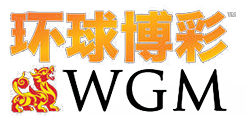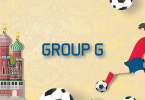This article first appeared in the May/Jun 2016 issue of WGM.
Jiangsu Suning fans recently found themselves facing an unprecedented situation – season tickets were suddenly very difficult to come by! Despite the club issuing 30 percent more season tickets than last year, fans were eager to see the big-name new arrivals giving real star power to the Chinese Super League (CSL) – the likes of Ramires, Alex Teixeira and Jô. Only a few years ago, the CSL was considered so scandalous and dull that even the locals steered clear. So what has changed? And how has it suddenly attracted all these big names while still at their peak?

The 2016 winter transfer window was an exceptional one for the Chinese Super League (CSL) as it spent more than any other league on the planet. Not even England’s Premier League or Spain’s La Liga could match their wealth. In total, CSL clubs spent more than €300 million in the market! Alex Teixeira, who was also targeted by Liverpool, instead moved to Suning for €50 million – almost double what the Reds were willing to offer – and became the most expensive foreign player in Chinese football history.
In the south, five-time champions Guangzhou Evergrande also made their intentions clear by signing Jackson Martínez for €48 million. These transfers surprised not only the local fans but also their European counterparties, with most puzzled as to how a striker who didn’t feature or score regularly for his previous club Atletico Madrid could be worth more than Manchester City gun Sergio Agüero! It is in many ways a reflection of the irrational side of Chinese football, but when we think of the fast development of the league over the past 20 years or so there is actually some rationale behind it.
The modern version of the Chinese league didn’t start to take shape until 1994 when Chinese football first became professional. Influenced by the huge financial success of the English Premier League, the Chinese Football Association reorganized the format of the original Championship League and established the Chinese Super League in 2004. But with such a short history – and heavily influenced by Asian gaming as well as local political bureaucracy – it’s no wonder the league was so dysfunctional during its early years of rapid growth in a booming Chinese economy.
![[b]Ramires[/b]](http://www.wgm8.com/wp-content/uploads/2016/04/images_wgm_1041_chinese-super-league-2.jpg)
In the first few years of the Championship League, very few clubs were looking abroad. Only four or five clubs brought in players from overseas, mostly from Russia and England, and because of a widespread lack of knowledge among club management, agents could easily sell their players to Chinese clubs. It’s why so few foreign players made an impact until the internet opened China’s eyes to the football world.
Still, there was plenty of trial and error. Although clubs quickly learnt about the big names, the first batch of arrivals – the likes of Júnior Baiano, Santos, Paul Gascoigne and Ruben Sosa – were well past their prime and on the verge of retirement by the time they hit Chinese soil. Once again they failed to make a meaningful impact and stadiums across the country remained empty.
![[b]Former Manchester City striker Jô signed with Jiangsu Suning earlier this year[/b]](http://www.wgm8.com/wp-content/uploads/2016/04/images_wgm_1041_chinese-super-league-4.jpg)
But that all changed in June of 2010 when the Chinese Super League welcomed a new team, Guangzhou Evergrande, into the fold. Owned by a wealthy real estate company who were determined to bring Guangzhou football back to the top, it took just a couple of weeks for the club to sign Luiz Guilherme da Conceição Silva, also known as Muriqui, for a record US$3.5 million.
It was a milestone for Chinese football in many ways. Not only was a Chinese club finally spending on quality rather than reputation, it was clearly willing to spend big. Guangzhou Evergrande showed that it had learnt from the very expensive lessons that previous failures had taught and in the years since Chinese football managers have increasingly followed their lead.
![[b]Jackson Martínez[/b]](http://www.wgm8.com/wp-content/uploads/2016/04/images_wgm_1041_chinese-super-league-5.jpg)
The formula now seems to be that Chinese Super League clubs will do whatever it takes to bring some of the world’s best and most exciting offensive players to China. The quota that demands at least one Asian player be included in the squad has been mostly saved for Korean players who often play in defensive positions. It is a popular pattern – attacking foreign players can score goals while top Asian defenders can stop them. That’s why Kim Young-gwon proved just as vital to Guangzhou Evergrande’s early success as Darío Conca and Muruqui when they played together.
![[b]Alex Teixeira[/b]](http://www.wgm8.com/wp-content/uploads/2016/04/images_wgm_1041_chinese-super-league-6.jpg)
The reputation of Guangzhou has sent a healthy signal to the world: Chinese football is finally a force to be reckoned with. Financially it is already a juggernaut, supported by wealthy Chinese corporates such as Ali Baba, Jing Dong and Suning. In terms of results, Guangzhou Evergrande has been dominant in the Asian Champions League and has widely impressed in international competitions. The influx of players at their peak, such as Elkson, Conka, Paulinho, Goulet and Ramires look to now be attracting even more quality players following in their footsteps.

From blindly trusting the agents during the early years, to bringing in players past their prime to finally spending big dollars to attract the real deal, Chinese football has now caught up to the fact that this is a buyers’ market. The Chinese Super League is no longer football’s retirement home.







